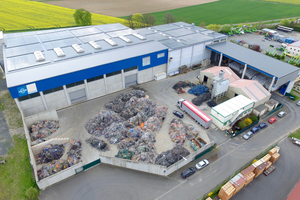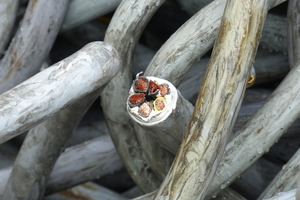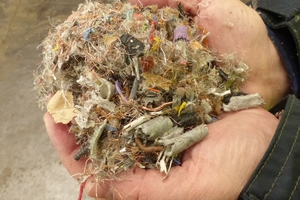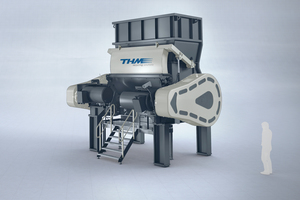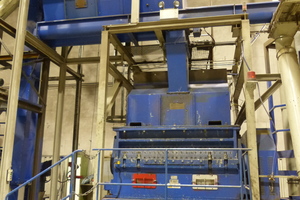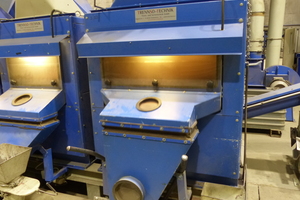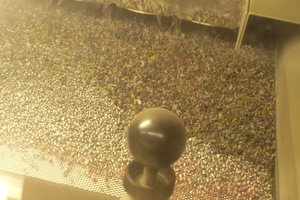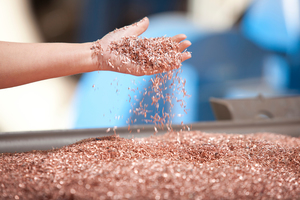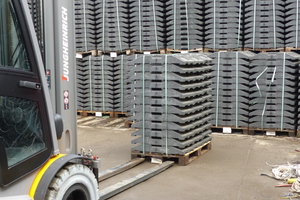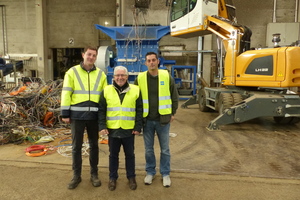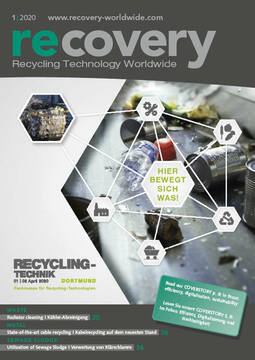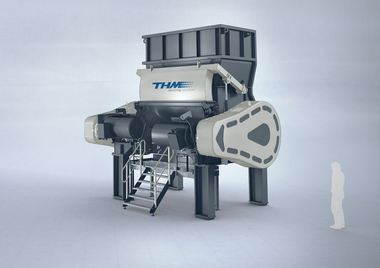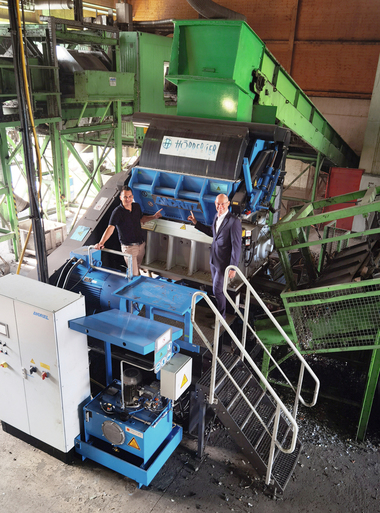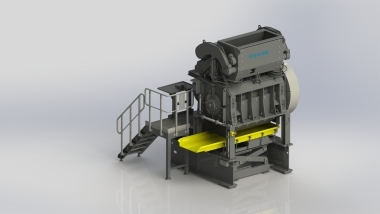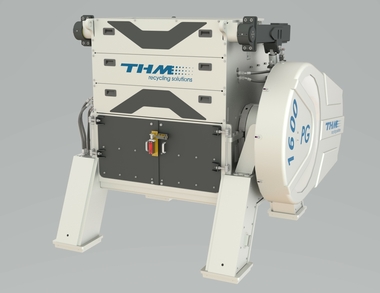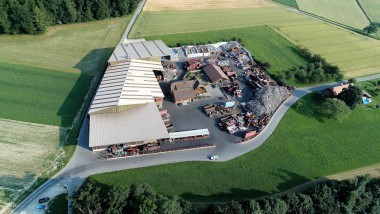State-of-the-art cable recycling
This family-owned enterprise with its more than one hundred and forty years of successful history started in 1876 with scrap (nowadays known as „used metal“), a billy goat, a handcart – and a farsighted woman. This was company founder Katharina Loacker, who even then recognised the value of old, no longer usable lumps of metal. Today, five generations later – and still a family company under the management of Christian Loacker – the Loacker group is one of Europe‘s largest recycling organisations, based in Götzis/Austria with around 1300 employees, around 40 sites in 6 countries and an annual turnover of 705 million € (2017).
The company operates not only in Austria, but also, with a total of around 30 locations, in Switzerland, Germany, Slovakia and Hungary. And the range of materials it handles has also grown – non-ferrous metals, cables, glass, paper, wood, plastics and other secondary resources are now also sorted and, in some cases, further processed, in addition to iron-containing scrap. The Loacker group has even committed itself to the topic of renewable energy – energy recovery by means of photovoltaics and biomass closes the logical cycle of the sustainable use of resources. Even now, Loacker operates 5 photovoltaics installations, in Germany and in Italy.
One of the Loacker group‘s locations is situated not far from the Germany city of Bamberg – the recycling company acquired in 2007 in Wonfurt is now one of the most modern and productive metals and cables recycling facilities in the German-speaking world.
In 2008, a larger but otherwise identical system incorporating technology supplied by Hosokawa Alpine and Trennso-Technik was commissioned adjacent to the already existing cable-recycling line installed in 1996, along with a line for recycling of electronics scrap in which Eldan technology and, again, equipment from Trennso-Technik were installed. The old cable-recycling line dating from 1996 was then shut down in 2012. The electronic-scrap recycling line mentioned above was also taken out of operation and converted to provide a second cable-recycling line. These, and a smaller third line, give Wonfurt one of the largest cable-reprocessing plant capacities anywhere in the German-speaking world.
The cable-recycling process starts with receipt of the material. Following storage-system assignment and incoming-goods inspection of the material, it is fed to the primary shredder. An overbelt magnet removes iron-containing items. The material then flows into the secondary shredder (granulator) and the granulator mill. A spheroidizing stage may be interposed, depending on requirements, before the flow arrives on the sorting tables. Three fractions ultimately leave the sorting unit: copper, mixed metals and plastic parts. A new production facility for WEMAS Absperrtechnik GmbH, of Gütersloh, is currently being constructed on the neighbouring site. In future, the plastics fraction will be supplied to this new facility, for the production of road-traffic management equipment from recycled plastic.
In early 2019, the primary shredder originating from 1996 was replaced by a UNIVERSAL GRANULATOR XG supplied by THM recycling solutions. This UNIVERSAL GRANULATOR permits single-stage comminution, making it possible to dispense with the secondary shredding stage. The new machine‘s forged and specially rolled components make it suitable for demanding continuous operation under tough working conditions. Thanks to a range of different screening elements, output size can be varied between 20 and 100 mm. The hydraulically pivoted screen basket thus permits fast and easy changing of the various screen segments. The UNIVERSAL GRANULATOR installed here at the Wonfurt location exhibits a number of special features. It has, for example, only one 200 kW drive, instead of two, in order to keep the machine‘s energy consumption as low as possible.
recovery magazine‘s editorial team took the opportunity of seeing the new system in action at the facility and of obtaining interesting information on the new installation from Matthias Köhler, managing director of Loacker Recycling GmbH, Wonfurt.
recovery: What made you decide now in favour of a UNIVERSAL GRANULATOR XG?
Köhler: One factor was the market situation – until around three years ago, about 60 % of life-expired cable went to China, but such materials now remain on the market here. One result of this was that many new facilities have been constructed on greenfield sites. My prime considerations in purchasing this new equipment were, firstly, creating redundancy for my existing line, to avoid downtimes and, secondly, installing a system which could be integrated into the existing line without having to replace further components, such as the filter system, for example.
recovery: Was the planned throughput achieved?
Köhler: The targets were actually beaten. A throughput of 6 t with a 0 to 40 mm screen was originally envisaged, and we‘re achieving 6 t with a 0 to 20 mm screen, using the UNIVERSAL GRANULATOR 6 t.
recovery: How is the initial experience?
Köhler: We‘re still at the test phase, jointly with THM. There, I ought also to emphasise that our cooperation is very close and very good. This is the first use of the UNIVERSAL GRANULATOR for cables, and we are thus both benefiting from our experience. Our 25 years of experience have enabled us to contribute a few suggestions for improvements, but we also know what the machine can do.
recovery: Was it, in fact, an aim to achieve a higher production capacity?
Köhler: The most important function is achieving redundancy, but the UNIVERSAL GRANULATOR has also enabled us to raise capacity by 20 %.
recovery: Finally, a very simple question: are you satisfied with the new equipment?
Köhler: We now have a process totally different to the one we were accustomed to, and we‘re still feeling our way forward a little but, all in all, yes, I‘m very satisfied.
recovery: Many thanks for this interesting talk!
UNIVERSAL GRANULATOR XG2400
Technical data:
Drive 2 x 200 kW
Rotor Ø 785 mm
Rotor length 2400 mm
Dimensions (L/W/H) approx. 5200 x 4600 x 5980 mm
Feed aperture approx. 2340 x 1530 mm
Weight approx. 40 t
Features:
High throughput rate
Constant high cut quality thanks to readjustable cutter arrays
Extra large flywheel
Great stability and smooth running thanks to a high machine weight
Hydraulic pusher unit, even lights can thus be shredded without difficulty
Easily replaceable wear parts
Defined output size thanks to easy-change screen segments
Granules and flakes of 20 to 100 mm
Applications:
Domestic, commercial and industrial waste
Metals
Plastics
Textiles
Cardboard and paper
Cable scrap
Used wood
Paper-production rejects
UNIVERSAL GRANULATOR XG2400
Drive 2 x 200 kW
Rotor Ø 785 mm
Rotor length 2400 mm
Dimensions (L/W/H) approx. 5200 x 4600 x
5980 mm
Feed aperture approx. 2340 x 1530 mm
Weight approx. 40 t
High throughput rate
Constant high cut quality thanks to readjustable cutter arrays
Extra large flywheel
Great stability and smooth running thanks to a high machine weight
Hydraulic pusher unit, even lights can thus be shredded without difficulty
Easily replaceable wear parts
Defined output size thanks to easy-change screen segments
Granules and flakes of 20 to 100 mm
Applications:
Domestic, commercial and industrial waste
Metals
Plastics
Textiles
Cardboard and paper
Cable scrap
Used wood
Paper-production rejects

